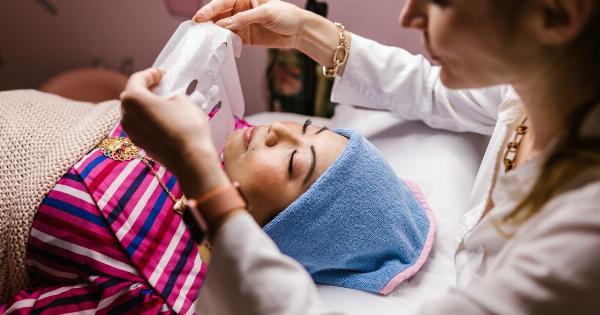Atopic dermatitis (AD) is a chronic skin condition characterized by itchy, inflamed, and dry skin. It affects millions of people worldwide, with both genetic and environmental factors playing a role in its development.
Recent research has focused on understanding the role of the microbial community in the pathogenesis of AD. This article explores the current knowledge regarding the microbial communities found in AD patients and their potential implications in disease progression and management.
Methods
Various studies have employed different methods to analyze the microbial communities associated with atopic dermatitis. These include culture-based techniques, amplicon sequencing, metagenomics, and shotgun metagenomics.
The choice of method depends on the research question and the depth of analysis required.
Changes in Microbial Diversity
One of the key findings in AD is a decrease in microbial diversity compared to healthy individuals. This is primarily observed in the skin and is associated with an overgrowth of pathogenic bacteria, such as Staphylococcus aureus.
Studies have also identified a decrease in beneficial bacteria, such as Propionibacterium and Corynebacterium, which contribute to a healthy skin barrier.
Role of Staphylococcus aureus
Staphylococcus aureus colonization is commonly observed in AD patients, particularly during flare-ups.
This bacterium produces various virulence factors that contribute to the pathogenesis of AD, including the release of exotoxins that disrupt the skin barrier and trigger inflammation. Targeting and eradicating Staphylococcus aureus colonization may be a promising therapeutic approach for managing AD.
Impact of Cutaneous Microbiota on Immune Dysregulation
The skin microbiota plays a crucial role in modulating the immune response. In AD, dysbiosis in the microbial community can lead to immune dysregulation, characterized by an imbalance between pro-inflammatory and anti-inflammatory cytokines.
This dysregulation contributes to the chronic inflammation seen in AD patients. Understanding the interplay between the skin microbiota and the immune system is important for developing targeted therapies.
Bacterial and Fungal Interactions
Studies have shown that the interactions between bacteria and fungi in the skin microbiota contribute to AD pathogenesis.
Dysbiosis in these interactions can lead to an overgrowth of pathogenic fungi, such as Malassezia, which are implicated in AD flares. The release of fungal allergens can trigger an immune response, exacerbating the symptoms of AD.
Role of Filaggrin Gene Mutations
A significant breakthrough in understanding the genetic predisposition to AD came with the discovery of filaggrin gene mutations. Filaggrin is a protein that plays a crucial role in maintaining the skin barrier function.
Mutations in the filaggrin gene compromise the integrity of the skin barrier, allowing for increased microbial colonization and penetration. This genetic predisposition, combined with dysbiosis, further exacerbates the inflammation seen in AD.
Emerging Therapeutic Approaches
Based on the understanding of the microbial community in AD, various therapeutic approaches are being explored.
Probiotics, prebiotics, and postbiotics have shown promise in restoring microbial balance, reducing inflammation, and alleviating AD symptoms. Topical treatments targeting specific bacteria, such as Staphylococcus aureus, are also under investigation.
Personalized Medicine in AD
Advancements in metagenomic sequencing and analysis have paved the way for personalized medicine in AD.
By characterizing an individual’s skin microbiota profile, targeted therapies tailored to their specific microbial imbalances could be developed. This approach may lead to more effective treatment strategies and improved patient outcomes.
Conclusion
The microbial community in atopic dermatitis patients is significantly different from that of healthy individuals. Dysbiosis and decreased microbial diversity contribute to immune dysregulation, chronic inflammation, and skin barrier dysfunction in AD.
Understanding the intricate interactions within the skin microbiota and their role in disease progression opens avenues for innovative therapeutic approaches. In the future, personalized medicine based on the individual’s skin microbiota profile may revolutionize the management of this chronic skin condition.






























